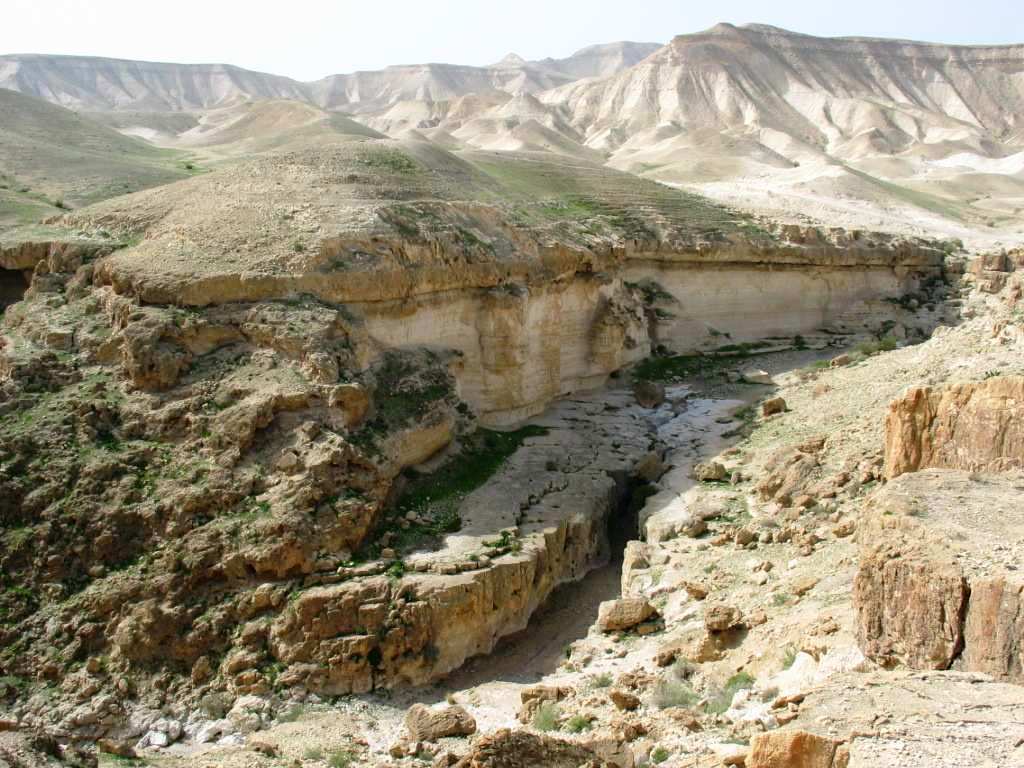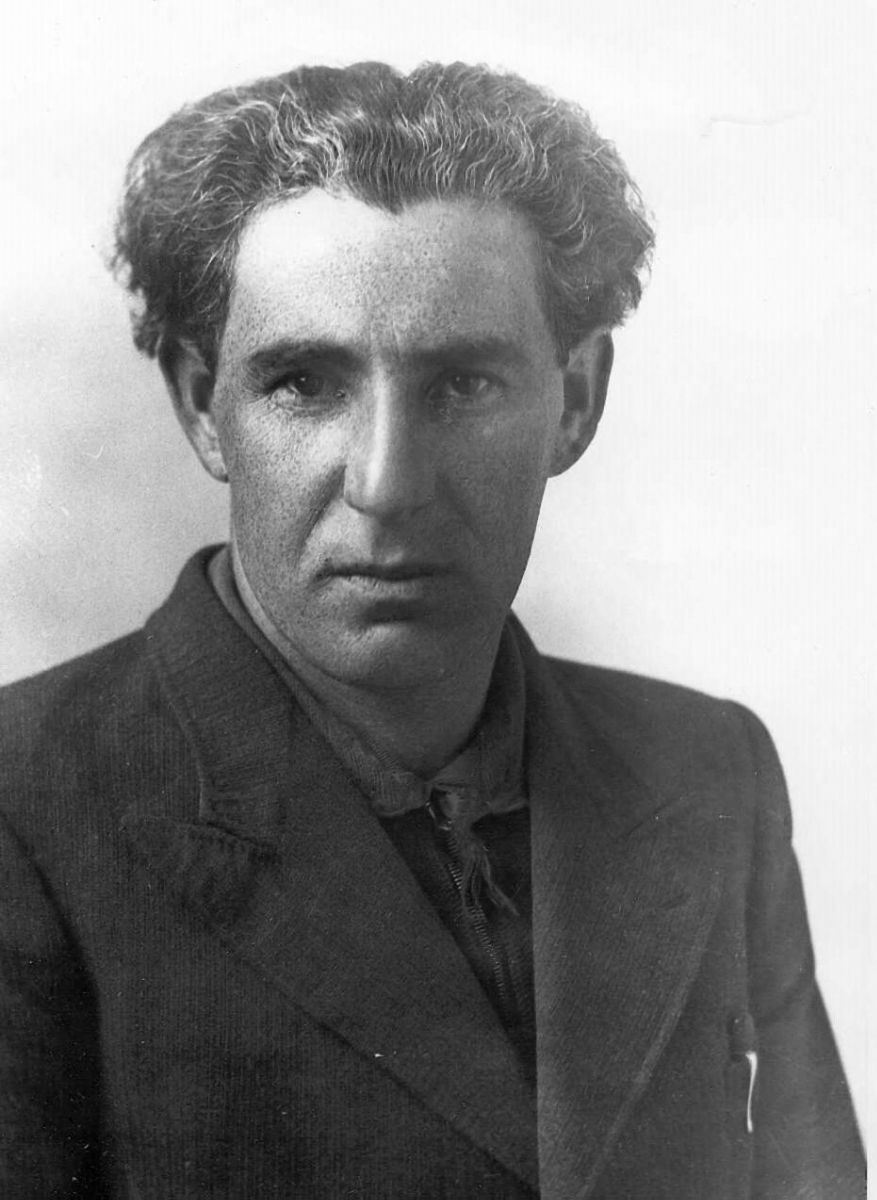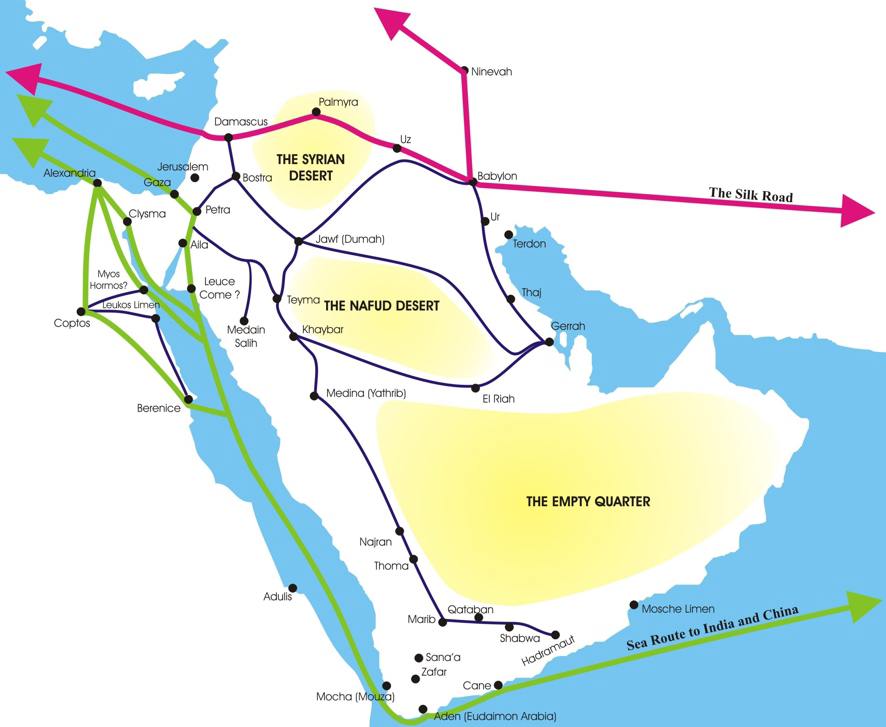|
Wadi Murabba'at
Wadi Murabba'at, also known as Nahal Darga, is a ravine cut by a seasonal stream which runs from the Judean desert east of Bethlehem past the Herodium down to the Dead Sea 18 km south of Khirbet Qumran in the West Bank. It was here in caves that Jewish fighters hid out during the Bar Kochba revolt, leaving behind documents that include some letters signed by Simon Bar Kochba. Discovery and analysis of the caves When the Ta'amireh bedouin tribe that discovered the first cave at Qumran, learned how valuable the texts they found were, they began to search for other sites that might contain more scrolls. This led in the autumn of 1951 to the discovery of caves high up in the near vertical rock face of the Wadi Murabba'at. With the confirmation that the new texts had come from Murabba'at, Gerald Lankester Harding and Roland de Vaux commenced official excavations there in January 1952. Four caves were examined. Remains were discovered that reflected habitation, usually temporary ... [...More Info...] [...Related Items...] OR: [Wikipedia] [Google] [Baidu] |
Scarab Artifact
Scarabs were popular amulets and impression seals in ancient Egypt. They survive in large numbers and, through their inscriptions and typology, are an important source of information for archaeologists and historians of the ancient world. They also represent a significant body of ancient art. For reasons that are not clear (although likely connected to the religious significance of the Egyptian god Khepri), amulets in the form of scarab beetles had become enormously popular in Ancient Egypt by the early Middle Kingdom (approx. 2000 BCE) and remained popular for the rest of the pharaonic period and beyond. During that long period the function of scarabs repeatedly changed. Primarily amulets, they were also inscribed for use as personal or administrative seals or were incorporated into jewelry. Some scarabs were created for political or diplomatic purposes to commemorate or advertise royal achievements. By the early New Kingdom, ''heart scarabs'' had become part of the battery of ... [...More Info...] [...Related Items...] OR: [Wikipedia] [Google] [Baidu] |
Book Of Isaiah
The Book of Isaiah ( he, ספר ישעיהו, ) is the first of the Latter Prophets in the Hebrew Bible and the first of the Major Prophets in the Christian Old Testament. It is identified by a superscription as the words of the 8th-century BCE prophet Isaiah ben Amoz, but there is extensive evidence that much of it was composed during the Babylonian captivity and later. Johann Christoph Döderlein suggested in 1775 that the book contained the works of two prophets separated by more than a century, and Bernhard Duhm originated the view, held as a consensus through most of the 20th century, that the book comprises three separate collections of oracles: Proto-Isaiah ( chapters 1– 39), containing the words of the 8th-century BCE prophet Isaiah; Deutero-Isaiah ( chapters 40– 55), the work of an anonymous 6th-century BCE author writing during the Exile; and Trito-Isaiah ( chapters 56– 66), composed after the return from Exile. Isaiah 1– 33 promises judgment and restoration f ... [...More Info...] [...Related Items...] OR: [Wikipedia] [Google] [Baidu] |
Deuteronomy
Deuteronomy ( grc, Δευτερονόμιον, Deuteronómion, second law) is the fifth and last book of the Torah (in Judaism), where it is called (Hebrew: hbo, , Dəḇārīm, hewords Moses.html"_;"title="f_Moses">f_Moseslabel=none)_and_the_fifth_book_of_the_Christian_Old_Testament.html" ;"title="Moses">f_Moses.html" ;"title="Moses.html" ;"title="f Moses">f Moses">Moses.html" ;"title="f Moses">f Moseslabel=none) and the fifth book of the Christian Old Testament">Moses">f_Moses.html" ;"title="Moses.html" ;"title="f Moses">f Moses">Moses.html" ;"title="f Moses">f Moseslabel=none) and the fifth book of the Christian Old Testament. Chapters 1–30 of the book consist of three sermons or speeches delivered to the Israelites by Moses on the Plains of Moab, shortly before they enter the Promised Land. The first sermon recounts the Moses#The years in the wilderness, forty years of wilderness wanderings which had led to that moment, and ends with an exhortation to observe the law. T ... [...More Info...] [...Related Items...] OR: [Wikipedia] [Google] [Baidu] |
Book Of Genesis
The Book of Genesis (from Greek ; Hebrew: בְּרֵאשִׁית ''Bəreʾšīt'', "In hebeginning") is the first book of the Hebrew Bible and the Christian Old Testament. Its Hebrew name is the same as its first word, ( "In the beginning"). Genesis is an account of the creation of the world, the early history of humanity, and of Israel's ancestors and the origins of the Jewish people. Tradition credits Moses as the author of Genesis, as well as the books of Exodus, Leviticus, Numbers and most of Deuteronomy; however, modern scholars, especially from the 19th century onward, place the books' authorship in the 6th and 5th centuries BC, hundreds of years after Moses is supposed to have lived.Davies (1998), p. 37 Based on scientific interpretation of archaeological, genetic, and linguistic evidence, most scholars consider Genesis to be primarily mythological rather than historical. It is divisible into two parts, the primeval history (chapters 1–11) and the ancestr ... [...More Info...] [...Related Items...] OR: [Wikipedia] [Google] [Baidu] |
Pessah Bar-Adon
Pessah Bar-Adon (Hebrew: פסח בר-אדון; b. 1907, d. 1985) was a Polish-born Israeli archaeologist and writer. Early life Born Pessah Panitsch in Kolno, Poland, to a Zionist, Haredi family, he was educated in a Jewish orthodox school and in Yeshivas. He immigrated to Israel in 1925. While working in housing and road construction to support himself, he studied for a degree in Middle Eastern studies at the Hebrew University of Jerusalem. Career For a period, he lived amongst Bedouins near Amman, Bet She'an, and Kuneitra in order to learn their lifestyle. Part of his motivation for this endeavor was to understand why many of the ancient Kings of Israel were originally shepherds. During this period he wore traditional Bedouin clothing and went by the name Aziz Effendi. During the 1929 Palestine riots and the 1936–1939 Arab revolt in Palestine, he was an active member of the Haganah Jerusalem. Later he also took part in the Aliyah Bet. In 1932 he participated in one o ... [...More Info...] [...Related Items...] OR: [Wikipedia] [Google] [Baidu] |
Antioch
Antioch on the Orontes (; grc-gre, Ἀντιόχεια ἡ ἐπὶ Ὀρόντου, ''Antiókheia hē epì Oróntou'', Learned ; also Syrian Antioch) grc-koi, Ἀντιόχεια ἡ ἐπὶ Ὀρόντου; or Ἀντιόχεια ἡ ἐπὶ Δάφνῃ "Antioch on Daphne"; or "Antioch the Great"; la, Antiochia ad Orontem; hy, Անտիոք ''Antiokʽ''; syr, ܐܢܛܝܘܟܝܐ ''Anṭiokya''; he, אנטיוכיה, ''Anṭiyokhya''; ar, أنطاكية, ''Anṭākiya''; fa, انطاکیه; tr, Antakya. was a Hellenistic, and later, a Biblical Christian city, founded by Seleucus I Nicator in 300 BC. This city served as the capital of the Seleucid Empire and later as regional capital to both the Roman and Byzantine Empire. During the Crusades, Antioch served as the capital of the Principality of Antioch, one of four Crusader states that were founded in the Levant. Its inhabitants were known as ''Antiochenes''; the city's ruin lies on the Orontes River, near Antakya, the ... [...More Info...] [...Related Items...] OR: [Wikipedia] [Google] [Baidu] |
Trajan
Trajan ( ; la, Caesar Nerva Traianus; 18 September 539/11 August 117) was Roman emperor from 98 to 117. Officially declared ''optimus princeps'' ("best ruler") by the senate, Trajan is remembered as a successful soldier-emperor who presided over one of the greatest military expansions in Roman history and led the empire to attain its greatest territorial extent by the time of his death. He is also known for his philanthropic rule, overseeing extensive public building programs and implementing social welfare policies, which earned him his enduring reputation as the second of the Five Good Emperors who presided over an era of peace within the Empire and prosperity in the Mediterranean world. Trajan was born in Italica, close to modern Seville in present-day Spain, a small Roman ''municipium'' founded by Italic settlers in the province of Hispania Baetica. He came from a branch of the gens Ulpia, the ''Ulpi Traiani'', that originated in the Umbrian town of Tuder. ... [...More Info...] [...Related Items...] OR: [Wikipedia] [Google] [Baidu] |
Tetradrachm
The tetradrachm ( grc-gre, τετράδραχμον, tetrádrachmon) was a large silver coin that originated in Ancient Greece. It was nominally equivalent to four Greek drachma, drachmae. Over time the tetradrachm effectively became the standard coin of the Classical Antiquity, Antiquity, spreading well beyond the borders of the Greek World. As a result, tetradrachms were minted in vast quantities by various polities in many weight and finesse standards, though the Athens-derived ''Attic standard'' of about 17.2 grams was the most common. Because of their large size, tetradrachms were often used by various states or rulers to advertise themselves or to deliver political messages. Popularity of the tetradrachm outlived the political independence of the Greeks and it remained in wide circulation in the Mediterranean up until Crisis of the Third Century, while debased varieties persisted in India and Central Asia into early Middle Ages. Due to their often high artistic level tetra ... [...More Info...] [...Related Items...] OR: [Wikipedia] [Google] [Baidu] |
Dinar
The dinar () is the principal currency unit in several countries near the Mediterranean Sea, and its historical use is even more widespread. The modern dinar's historical antecedents are the gold dinar and the silver dirham, the main coin of the medieval Islamic empires, first issued in AH 77 (696–697 CE) by Caliph Abd al-Malik ibn Marwan. The word "dinar" derives from the Latin " ''dēnārius''," a silver coin of ancient Rome, which was first minted about c.211 BCE. The English word "dinar" is the transliteration of the Arabic دينار (''dīnār''), which was borrowed via the Syriac ''dīnarā'', itself from the Latin ''dēnārius''. The Kushan Empire introduced a gold coin known as the ''dīnāra'' into India in the 1st century AD; the Gupta Empire and its successors up to the 6th century adopted the coin. The modern gold dinar is a projected bullion gold coin, not issued as official currency by any state. Legal tender Countries currently usi ... [...More Info...] [...Related Items...] OR: [Wikipedia] [Google] [Baidu] |
Drachma
The drachma ( el, δραχμή , ; pl. ''drachmae'' or ''drachmas'') was the currency used in Greece during several periods in its history: # An ancient Greek currency unit issued by many Greek city states during a period of ten centuries, from the Archaic period throughout the Classical period, the Hellenistic period up to the Roman period under Greek Imperial Coinage. # Three modern Greek currencies, the first introduced in 1832 by the Greek King Otto () and the last replaced by the euro in 2001 (at the rate of 340.75 drachmae to the euro). The euro did not begin circulating until 2001 but the exchange rate was fixed on 19 June 2000, with legal introduction of the euro taking place in January 2002. It was also a small unit of weight.. Ancient drachma The name ''drachma'' is derived from the verb (, "(I) grasp"). It is believed that the same word with the meaning of "handful" or "handle" is found in Linear B tablets of the Mycenean Pylos. Initially a drachma was a ... [...More Info...] [...Related Items...] OR: [Wikipedia] [Google] [Baidu] |
Nabataea
The Nabataean Kingdom (Nabataean Aramaic: 𐢕𐢃𐢋𐢈 ''Nabāṭū''), also named Nabatea (), was a political state of the Arab Nabataeans during classical antiquity. The Nabataean Kingdom controlled many of the trade routes of the region, amassing large wealth and drawing the envy of its neighbors. It stretched south along the Red Sea coast into the Hejaz, up as far north as Damascus, which it controlled for a short period (85–71 BC). Nabataea remained an independent political entity from the mid-3rd century BC until it was annexed in AD 106 by the Roman Empire, which renamed it Arabia Petraea. History Nabataeans The Nabataeans were one among several nomadic Bedouin tribes that roamed the Arabian Desert and moved with their herds to wherever they could find pasture and water. They became familiar with their area as seasons passed, and they struggled to survive during bad years when seasonal rainfall diminished. Although the Nabataeans were initially embedded in Aramaic ... [...More Info...] [...Related Items...] OR: [Wikipedia] [Google] [Baidu] |










